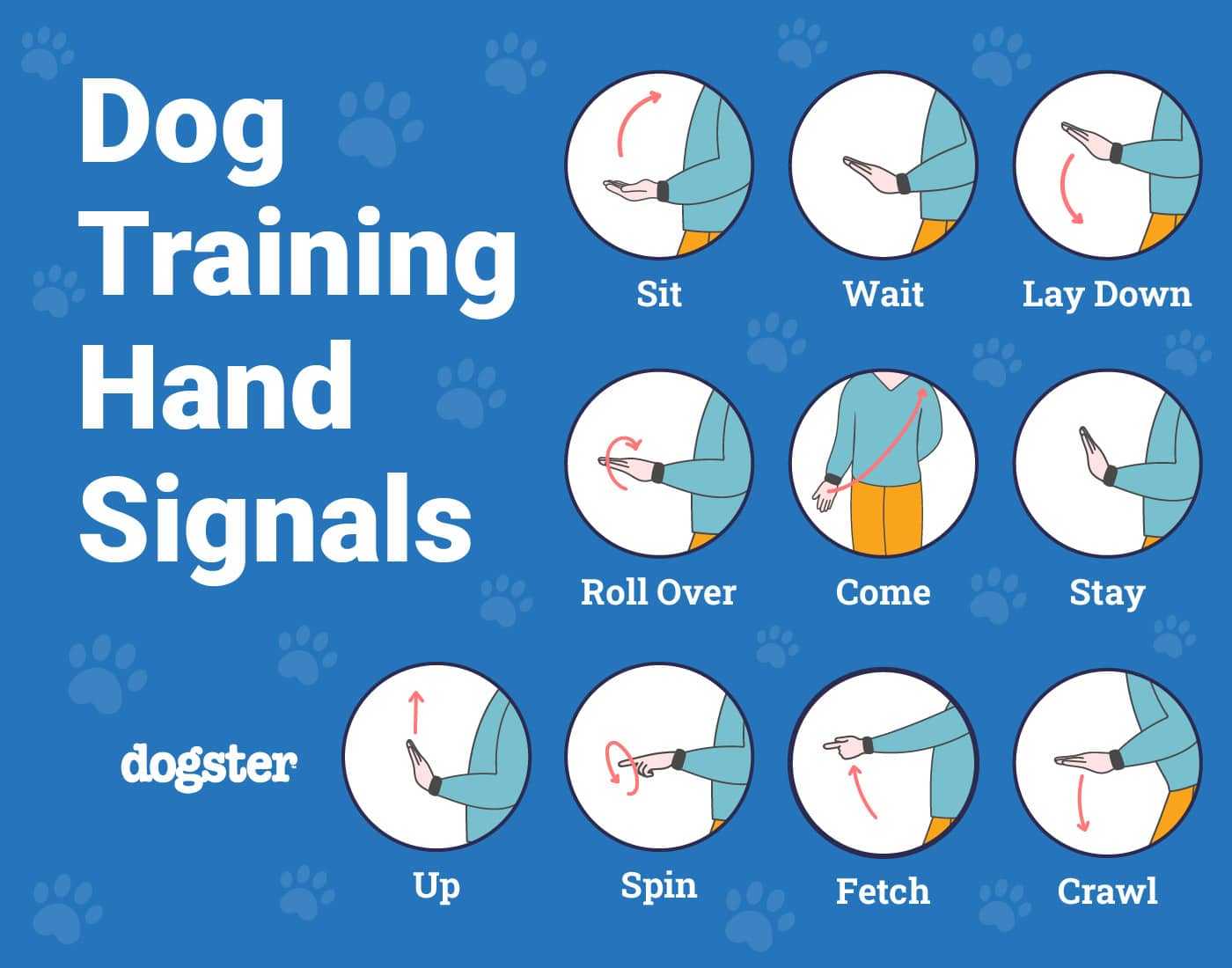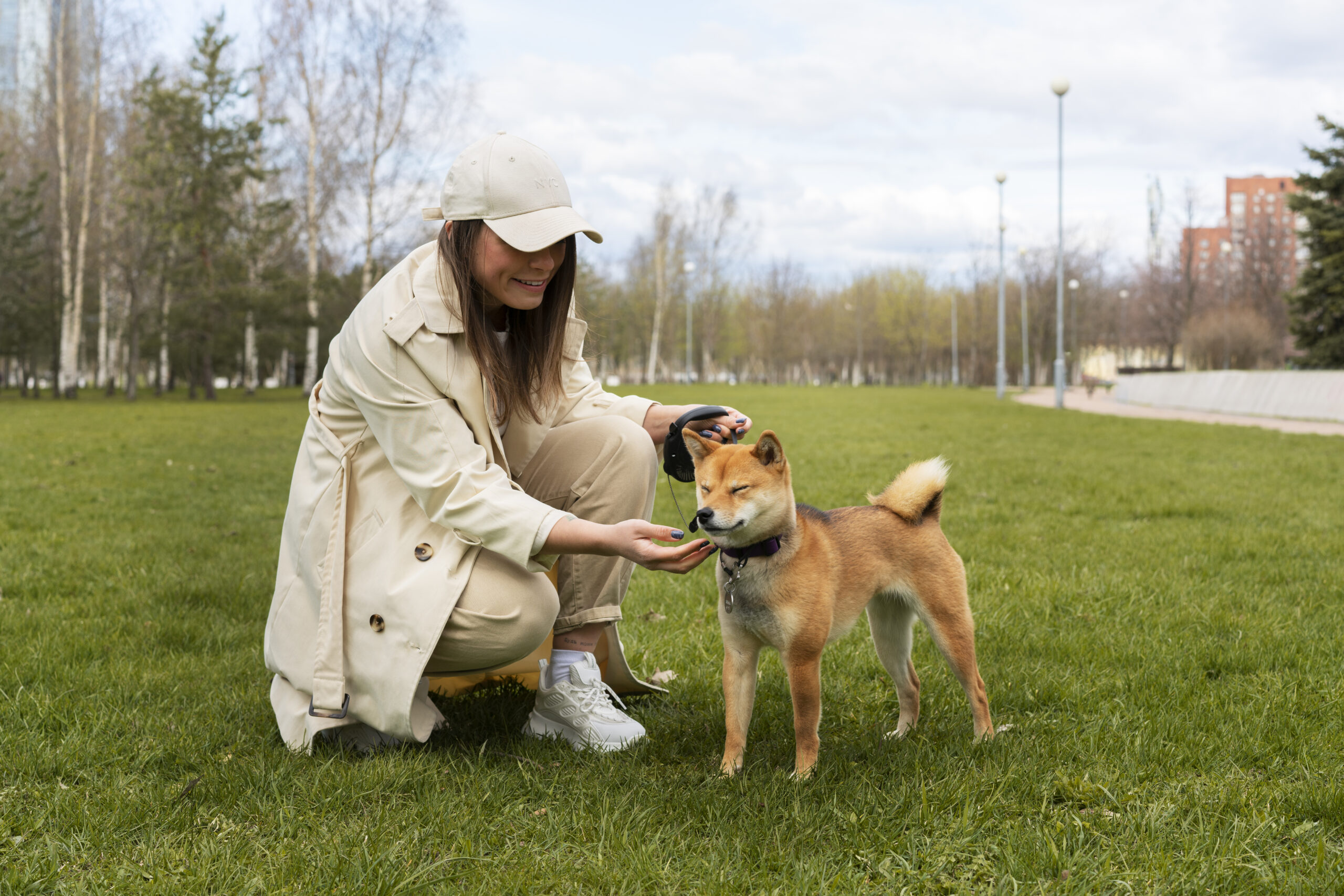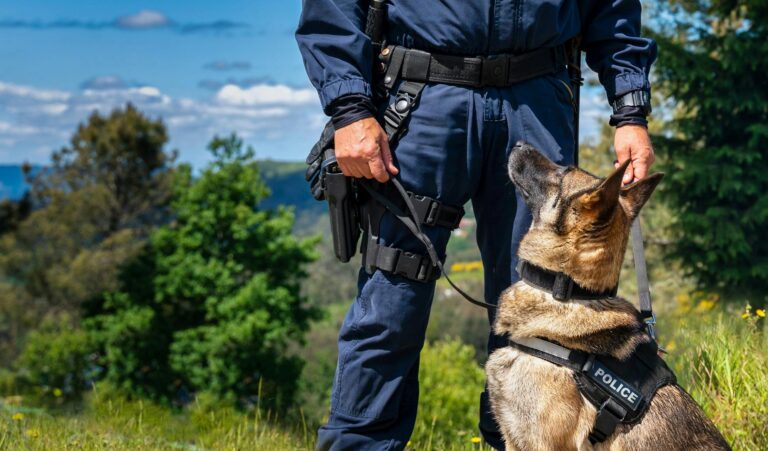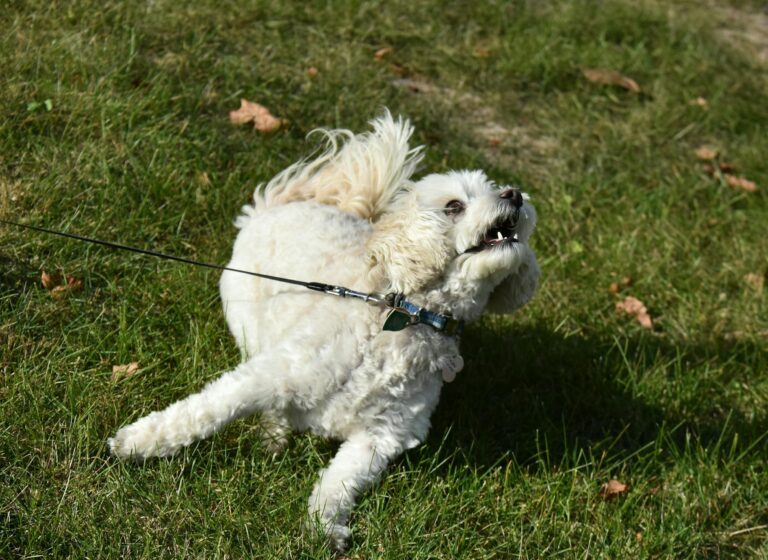Command On Command: The Benefits Of Verbal Vs. Hand Signal Training
Surprisingly, despite being ancient methods of communication, both verbal and hand signals have steadily advanced training techniques in dynamic ways. Consider the quick adaptability dogs exhibit when trained using verbal commands, a method prized for its versatility in various environments. Alternately, hand signals provide a silent yet powerful approach, rewarding trainers with an elegance of non-verbal interaction.
Historically, hand signals have roots in hunting dog traditions, thriving in circumstances where silence is golden. Verbal commands, however, boast the statistic of upwards of a 90% comprehension rate when used consistently. This marriage of techniques can cater to different sensory preferences and situations, allowing trainers to tailor approaches that maximize effectiveness and engagement.

Command on Command: The Benefits of Verbal vs. Hand Signal Training
Training animals, especially dogs, comes with unique challenges and rewards. Verbal commands are popular for their simplicity and ease of use in various environments. Dogs quickly learn words like “sit” or “stay,” which makes it easier for owners to manage everyday situations. However, the effectiveness of verbal cues depends heavily on tone and clarity. If a command is unclear, it may confuse the animal.
Hand signals offer silent communication, making them useful in noisy or quiet environments. They help strengthen the connection between the trainer and the animal as visual cues are often instinctive. Many dogs respond quicker to visual prompts, understanding actions better than words. This can be especially significant in complex training scenarios. Such precise communication increases focus and reduces misunderstandings.
Combining both methods provides flexibility and variety in training routines. It ensures that an animal can respond in different settings, whether it’s in a crowded park or a quiet library. This dual approach adapts to the animal’s learning preferences, maximizing success. For trainers and owners, it also introduces creativity and fun into sessions. Balanced training takes into account the strengths of each method.
Choosing between verbal and hand signal training depends on the environment and the animal’s nature. Some trainers prefer starting with verbal commands due to their accessibility. Others may lean toward hand signals for their distinct advantages in silent or discreet situations. Both methods have their own set of benefits and can be tailored to fit specific needs. Ultimately, a well-trained animal equipped with both skills is versatile and well-prepared for any situation.
Hand Signals vs. Verbal Commands
The Versatility of Verbal Command Training
Verbal command training offers a foundation for clear communication between humans and animals. It’s a dynamic method that’s especially effective because words can convey a wide range of commands. For instance, with a simple word, trainers can instruct an animal to “sit,” “stay,” or “come.” This versatility makes it a preferred choice for many trainers and pet owners. Words are easily understood when spoken with the right tone and emphasis.
Using verbal commands, trainers can effectively guide animals in both everyday situations and competitive environments. This method ensures that an animal is attentive even in bustling spaces. It also boosts the animal’s cognitive abilities, as they learn to differentiate between various sounds and meanings. Enhanced focus and comprehension result from consistent practice. This approach also prepares animals for tasks requiring immediate response.
Adding variety to verbal training helps keep animals engaged and focused. This can be done with different cues for the same command, like using synonyms or changing tone. Such tactics prevent training from becoming monotonous. Training becomes a fun activity, encouraging enthusiasm in the animal. An interested animal is often a quick learner.
- Consistency is key with verbal training.
- Use short, distinct words.
- Ensure positive reinforcement.
Although verbal commands adapt well to many environments, they require clear pronunciation and timing. Animals rely on the trainer’s voice, which shouldn’t waver or be hesitant. It’s crucial for handlers to remain calm, as animals can sense nervousness. The adaptability of verbal training allows for creative and engaging interactions. Practicing consistently ensures animals are confident and responsive to commands.
The Elegance and Precision of Hand Signal Training
Hand signal training offers a unique, silent way to communicate with animals. This method is excellent for situations where quiet is necessary, such as in competitive settings or during hunts. Unlike verbal commands, hand signals are visual and can be understood from a distance. They convey clear directions, minimizing confusion for the animal. This precision makes training more effective.
Using simple and distinct gestures ensures the animal quickly associates actions with specific signals. Consistency in hand signals helps reinforce learning, building a reliable communication channel. It allows trainers to guide animals seamlessly through tasks without distractions from external noises. For animals, this visual clarity can enhance focus and responsiveness. Such engagement fosters stronger understanding and bonds.
- Ensure each signal is unique.
- Practice regularly to reinforce memory.
- Pair gestures with rewards for positive learning.
Hand signal training encourages animals to pay close attention to their handlers. This attention can increase during practice sessions, leading to higher accuracy. As animals improve, handlers see a notable difference in their ability to respond instantly to cues. Moreover, training becomes interactive and keeps the animal intrigued. This kind of training is both challenging and rewarding for handlers and animals.
Some may find hand signal training demanding due to the precision required, but the benefits outweigh the challenges. Patience and persistence are key to mastering it effectively. This approach can be adapted to various training programs, offering a silent command in otherwise noisy situations. Trainers can rely on gestures for communication, which makes for a discreet and professional display. Well-trained animals thrive under such focused guidance.
Factors to Consider When Choosing Training Methods
When selecting a training method, understanding the individual animal’s learning style is vital. Some animals may respond better to verbal commands, while others excel with hand signals. Observing your pet’s reaction can guide the choice of the method. The responsiveness to initial cues often indicates their natural inclination. Tailoring the approach ensures better engagement and results.
The environment plays a significant role in deciding the training method. Busy or noisy surroundings might necessitate hand signals, as they bypass auditory distractions. On the other hand, open spaces with fewer distractions might be ideal for verbal commands. Matching the method to the environment maximizes focus and cooperation. This harmonious setup aids in successful training outcomes.
- Consider the animal’s age and previous training experiences.
- Choose techniques that match their energy levels.
- Adapt training duration to keep sessions brief yet effective.
Training goals should also influence the chosen method. For instance, if precision and quick response are critical, such as in competitive scenarios, hand signals might be more beneficial. Conversely, day-to-day commands might be better suited for verbal instruction for ease of use. Understanding the objective shapes the strategy, leading to effective training sessions. Clearly defined goals provide direction and motivation.
Consistency is key across all training methods, ensuring the animal understands and retains what is taught. Regular practice and positive reinforcement solidify learning. Reward systems can be tailored according to the training method, whether it involves verbal praise or gestures. Balanced corrections are necessary to maintain progress without discouragement. These practices help cultivate a reliable and responsive learner.
Lastly, consider your comfort and proficiency with the chosen method. If a trainer struggles with hand signals, it might confuse the animal and derail progress. Select a method that suits your communication style and skill set. This choice ensures smooth training sessions and clear instructions. A confident trainer communicates effectively, instilling confidence in the animal as well.
The Power of Combining Verbal and Hand Signal Training
Combining verbal and hand signal training creates a dynamic way to communicate with animals, offering the best of both worlds. This dual approach caters to different learning styles, ensuring the animal can adapt to various situations. For instance, a dog can learn to “sit” through both a word and a gesture, which provides flexibility. This combination boosts the animal’s ability to respond whether it’s noisy or quiet. It enhances overall training effectiveness and engagement.
Using both methods simultaneously strengthens the learning process, making commands more memorable. Animals rely on multiple senses, and this dual technique leverages visual and auditory cues. By doing this, animals can pick up cues faster as they connect actions with both a sound and a signal. It helps reinforce the learned behavior, especially during early training stages. This harmonious pairing leads to improved retention of commands over time.
- Simplifies the training process by offering multiple communication avenues.
- Reduces the reliance on just one method, adding flexibility.
- Improves communication even in distractions.
By combining methods, trainers can see increased success in handling complex tasks or training multiple animals. It’s particularly useful in environments where one method might not be sufficient alone, such as competitions or public spaces. Animals quickly learn to anticipate the next command, whether it’s heard or seen. This foresight offers a sense of predictability and security for both the animal and trainer. Such collaboration fosters trust and understanding.
Moreover, this method allows for creative training sessions, keeping both trainers and animals stimulated. It breaks monotony, ensuring sessions remain exciting and effective. Engaging animals through varied cues makes learning more enjoyable. As a result, animals are more motivated to participate actively. This enthusiasm often translates into impressive performance both at home and in professional settings.
Trainers considering this approach should focus on consistency, ensuring both verbal and non-verbal cues are clear and consistent. Regular practice helps embed these signals, making them second nature to the animal. Practicing in diverse settings also prepares the animal for any scenario. With time, the bond between trainer and animal deepens, based on mutual understanding and respect. Such dedication results in successful and rewarding training experiences.

Frequently Asked Questions
Training animals using verbal cues and hand signals offers a variety of benefits and challenges. Understanding these techniques helps create a balanced and effective communication strategy.
1. What is the main advantage of using verbal commands?
Verbal commands provide instantaneous communication, allowing trainers to convey instructions clearly. They are particularly useful in environments where animals cannot easily see visual cues. By using words, trainers can quickly direct an animal’s behavior, ensuring immediate responses to instructions. This makes verbal commands ideal for quick behavioral corrections in dynamic settings.
The tone and clarity of verbal commands play a crucial role in effectiveness. When delivered consistently, these commands can be understood by animals even in bustling situations. Verbal training also enables trainers to communicate with animals from a distance. This versatility proves beneficial for both everyday interactions and specialized training.
2. Why are hand signals important in animal training?
Hand signals offer a silent mode of communication, which is ideal for environments where noise levels are high or silence is required. Dogs or other animals can understand these gestures easily, as they rely on visual cues for comprehension. Hand signals offer clarity since movements can be distinct and specific for each command.
Moreover, hand signals enhance focus because animals constantly watch for the next move. This type of training increases the bond between the animal and trainer. By relying on sight rather than sound, animals learn to follow directions without verbal input, honing their attentiveness and discipline. Such skills are invaluable in competitive or professional settings.
3. How does combining verbal and hand signal training benefit animals?
Combining verbal and hand signals provides a more comprehensive training approach, using both hearing and sight. This dual method enhances learning because it stimulates multiple senses at once. Animals become adaptable, able to respond regardless of their current focus. Training effectiveness increases when signals reinforce one another.
Such a strategy caters to varied learning styles, making it suitable for a broad range of animals. This combination makes communication smoother and more effective for both routine commands and complex instructions. As a result, animals trained in this way become more responsive and versatile, capable of handling various tasks with ease.
4. Are there any challenges when using hand signals?
One challenge of hand signals is ensuring visibility, which can be difficult in crowded spaces or poor lighting. If an animal fails to see the cue, it might not respond correctly, leading to confusion. Trainers must be consistent, using distinct gestures that are easy to recognize to avoid misunderstandings.
Additionally, mastering hand signals requires patience as both the trainer and animal must practice regularly. This can demand more time compared to verbal training. However, the benefits often outweigh these challenges, leading to a deeper relationship and more refined communication skills.
5. How can trainers ensure consistency with verbal commands?
To maintain consistency, trainers should use the same words for each command, avoiding synonyms or variations. Using consistent tone and emphasis ensures animals understand the command’s importance. Repetition is key, as frequent practice helps animals associate words with actions securely.
Positive reinforcement helps solidify verbal command understanding. Rewarding correct actions encourages animals to remember and follow instructions accurately. Trainers should keep sessions engaging, using a mix of practice routines to prevent monotony. This approach helps in achieving reliable and consistent performance from the trained animal.
Conclusion
Combining verbal commands and hand signals position trainers to communicate effectively, catering to various learning styles. This dual approach sharpens an animal’s adaptability, ensuring it can respond to commands in diverse environments. Such a strategy not only enriches the training process but also fortifies the bond between the trainer and the animal.
As techniques evolve, understanding the strengths and challenges of each method remains crucial. By leveraging the best of both verbal and visual cues, trainers can create engaging and successful training sessions. This balanced approach leads to well-rounded, versatile animals ready to tackle any challenges posed by their training regimen.






